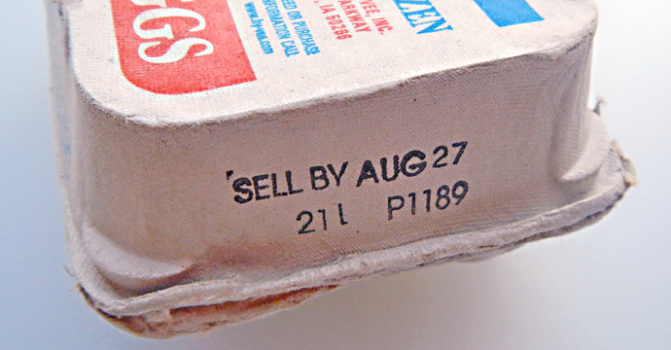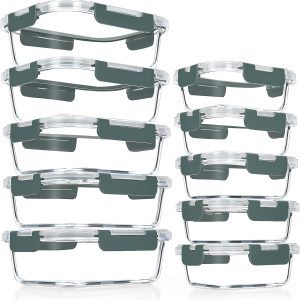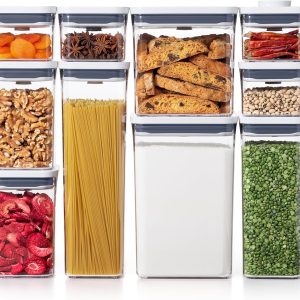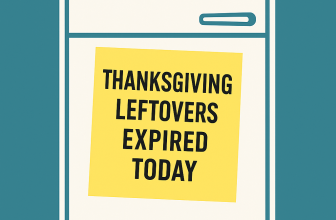I’m not going to lie. I’m a “when in doubt, throw it out” kind of gal. Often, it’s hard to balance that urge with my desire not to waste food. Understanding the myriad of confusing food labels related to expiration and quality has helped me save money, stop trashing edible items, and avoid getting sick.
So, here's a detailed breakdown of common food expiration and quality-related labels, what each one actually means, and how they relate to food safety versus food quality, based on standards from the USDA, FDA, and other reputable sources.
Key Food Label Terms & What They Mean
| Label | What It Means | Is It About Safety? | Details & Guidelines |
| “Sell By” | Date for retailers to remove the product from the shelves | No, relates to quality & stock rotation | Common on dairy, meats, and baked goods. Meant for inventory management, food may still be safe to eat for days to weeks after this date if stored properly. |
| “Best If Used By/Before” | Suggested date for best flavor or quality | No, not about safety | Used by manufacturers to reflect peak freshness. Does not mean food is unsafe after this date. |
| “Use By” | Last recommended date for peak quality | Sometimes, it can relate to safety for perishables | On highly perishable items (e.g., deli meat, baby formula), it may also indicate when spoilage risks increase. After this, safety is not guaranteed, especially if the item was not refrigerated. |
| “Freeze By” | Date by which food should be frozen to preserve quality | No, it’s about maintaining the best quality | Meant to guide when to freeze to avoid texture/flavor deterioration. Safe if frozen properly even after this date. |
| “Expiration Date” (EXP) | Product should not be consumed after this date | Yes, for certain products | Legally required for infant formula, medications, and some dietary supplements. Past this date, safety and nutritional value may not be guaranteed. |
| “Packed On” / “Date of Pack” | Date food was packaged | No, informational only | Common on fresh foods like meat and fish. Helps determine how long food has been in the package, but you must rely on storage time and spoilage indicators. |
| “Born On” Date (Beer/Beverages) | Production date for beverages like beer | No, freshness only | For flavor tracking. Not a food safety issue. Beer and sodas may lose carbonation/flavor, but not become unsafe. |
| “Julian Date” | Numeric calendar date used in manufacturing (e.g., 04124 = Feb 10, 2024) | No, manufacturer reference | Sometimes used in place of “pack date” or for tracking production batches. Not helpful for consumers unless explained. |
| “Guaranteed Fresh” | Retailer/manufacturer guarantees quality until this date | No, marketing term | Common in bakery goods and snacks. After this date, texture or flavor may degrade, but not a safety concern. |
Foods That Must Have Expiration Dates (Legally Mandated in the U.S.)
| Product | Required Label | Why It Matters |
| Infant formula & some baby foods | “Use By” or “Expiration Date” | Required by the FDA because nutrients degrade and spoilage may occur after the date |
| Medications | Expiration Date | Potency and safety are not guaranteed past this date |
| Some meal kits or prepackaged perishables (state-level laws) | Use/Expiration Date | Varies by state, especially for high-risk ready-to-eat foods |
Safety Tips for Expired or Date-Passed Foods
- Trust your senses: Look, smell, and feel. If anything seems off, toss it.
- Storage matters: Even if within date, food kept at the wrong temperature may spoil faster.
- When in doubt, throw it out: Especially for meat, seafood, dairy, and prepared foods.
- Use a food safety app (like USDA’s “FoodKeeper”) for shelf-life estimates.
Important Distinction: Expiration Doesn’t Mean Spoiled
Most dates are not regulated or required by federal law (except for baby formula and meds). They are quality indicators, not hard safety deadlines.
Find out the best way to store leftovers.

















